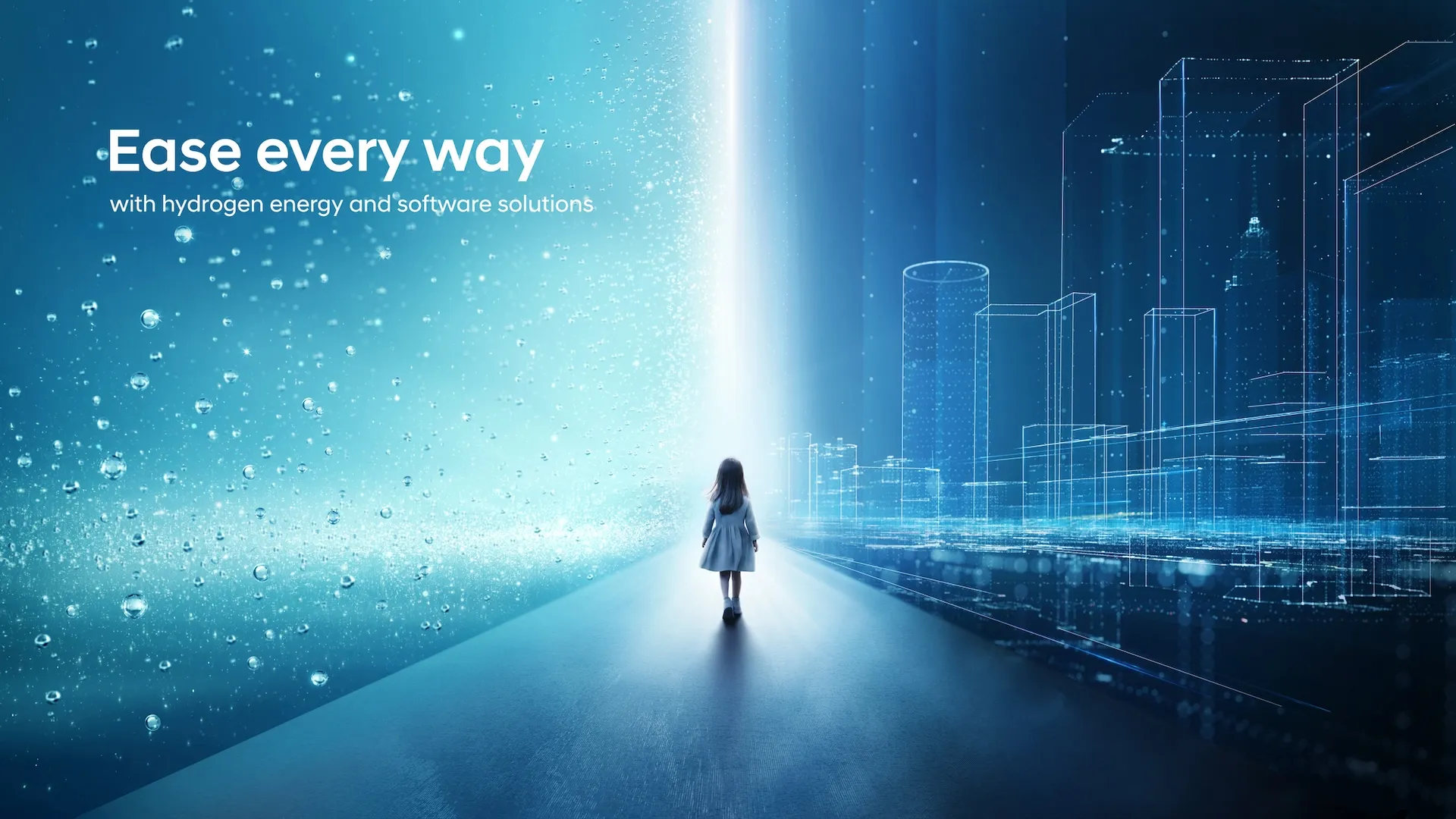Hyundai on Monday revealed more detail about its hydrogen plans—including a comprehensive look at its work to establish a “hydrogen value chain.”
Across Hyundai Motor Group, the company now projects that by 2035 it will use 3 million metric tons annually. By Green Car Reports’ calculations, that’s enough to keep several million fuel-cell-powered light vehicles fueled.
But as Hyundai details, not all of that will go to cars, trucks, and buses. The company’s hydrogen vision extends to trains, ships, power generators, construction, steelmaking, robotics, and air mobility, and manufacturing itself.
With the overarching vision put on display at CES this week in Las Vegas, Hyundai demonstrates that its hydrogen-focused HTWO business now enables each stage of the clean hydrogen value chain, from production to storage, transportation, and use.
On the road to achieving carbon neutrality by 2050, the company wants to use 100% renewable energy at its overseas factories by 2045 and in every facility by 2050—and it says hydrogen will plan an important role in that.
Turning waste and old plastic into hydrogen
Part of that is due to come from a megawatt-scale PEM (proton exchange membrane) electrolyzer for green hydrogen. But the company is also focusing on a resource-circulation approach, including Waste-to-Hydrogen and Plastic-to-Hydrogen. Waste-to-Hydrogen employs the fermentation of organic waste to generate biogas that’s treated to capture carbon dioxide and hydrogen, while Plastic-to-Hydrogen melts waste plastics that can’t be recycled, removing byproducts along the way and making hydrogen through gasification.
Hyundai is already testing Waste-to-Hydrogen in Indonesia. In the U.S., it’s playing a role in the establishment of federally-funded hydrogen hubs, and at the Port of Oakland in California it’s testing 30 Hyundai Xcient hydrogen fuel-cell semis. Also, at the company’s upcoming EV “Metaplant” in Georgia it’s aiming to make up to 300,000 EVs annually, it plans to deploy more of these fuel-cell trucks for logistics.
What about fuel-cell cars and trucks?
Hyundai boasts that, at present, it has the world’s highest market share in hydrogen-powered vehicle sales—a slice of the market that’s still extremely small in itself.
At present, the Toyota Mirai and Hyundai Nexo are the only two publicly available fuel-cell passenger vehicles for the U.S., while the BMW iX5 is currently being fleet-tested.
Toyota, which previously made North America the focus for fuel-cell vehicles, has shifted its hydrogen fuel cell vehicle push toward Europe and China—although the automaker is now assembling hydrogen fuel-cell modules in Kentucky for use in trucks and other applications, and it’s studying how fuel-cell tech could help smooth the grid.
Don’t write off cars and SUVs altogether. Hydrogen likely will play an important role in helping transition some types of transportation away from internal combustion engines. But as the ecosystem takes form, and hydrogen-delivery hurdles remain, Hyundai’s vision suggests that seeing the big picture first may prove better in the long run.

